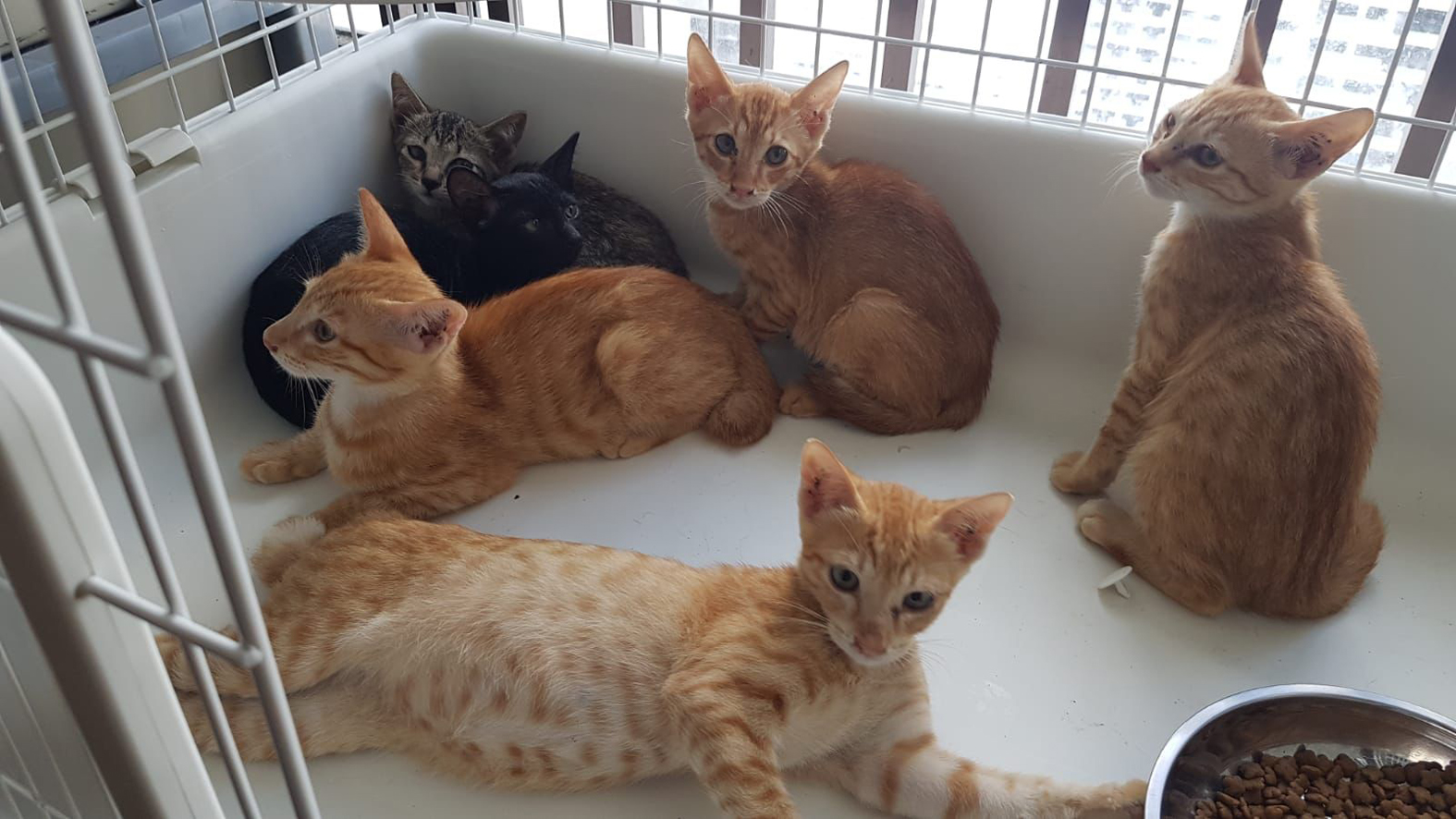Cats invade Senoko Power Station after neighbouring facilities close
Sign up now: Get ST's newsletters delivered to your inbox

Seventeen cats - 12 kittens and five adult cats - were trapped in Senoko Power Station on Sept 19, 2021.
PHOTO: COURTESY OF CINDY LIM
Follow topic:
SINGAPORE - About 30 stray cats have invaded the Senoko Power Station in Sembawang after neighbouring factories and warehouses shut amid Covid-19.
The influx of unsterilised cats at the protected site has raised concerns that it may lead to an increase in the feline population and fights with the sterilised cats currently calling the station home.
Ms Cindy Lim, senior vice president and head of legal and compliance at Senoko Energy, said there were 10 resident cats at the power station, which employees - including herself - regularly feed.
"That's likely why stray cats from the surrounding industrial area, such as the food processing factories, flocked to Senoko Power Station when those places closed - for food and shelter," she told The Sunday Times.
While the resident cats were sterilised by the Cat Welfare Society (CWS) about two years ago, the stray cats that flocked to the power station in late August are not neutered.
Ms Lim said: "I noticed a few pregnant cats among the new strays. This got me worried as, if left unchecked, cat numbers can easily double or triple in a few months."
Around 20 cats were spotted roaming around a busy part of the site where welding and machine cutting works were carried out.
"There's heavy machinery and bulldozers and lots of sharp, rusty metal parts with jagged edges at the tight compound they hang around. Two of the cats have suffered crush injuries that resulted in limb amputation," she added.
Mr Graeme York, CEO and president of Senoko Energy, told ST that the company engaged a professional cat trapper who works with CWS.
Seventeen cats - 12 kittens and five adult cats - were trapped on Sept 19.
"The adult cats were sterilised under CWS' stray cat sterilisation programme and returned to the power station," he said.
The kittens were placed in foster care and put up for adoption; Ms Lim fostered two. Ten of the kittens have been adopted.
Ms Lim and Mr York plan to schedule another session to trap and neuter 12 more cats at the power station in November.
Said Mr York, a self-professed animal lover: "I'm not against having a small population of cats at our site, provided they continue to be cared for. From a humanitarian perspective, it is important that they are neutered so that they are not breeding and the population grows out of control."
CWS president Thenuga Vijakumar said that the number of cats in industrial areas will multiply rapidly if they are not sterilised. This is especially tough as the organisation faces a backlog of trap-neuter-return-manage (TNRM) cases due to Covid-19 restrictions.
"This is a huge problem in industrial and restricted areas, as permission is often needed to enter premises to trap the cats. We often get turned down by companies who do not understand TNRM," she said.
Ms Thenuga added that having many unsterilised cats will result in caterwauling - the shrill howling cats use as mating call - scent marking with urine and territorial fights. Unsterilised cats can also bring these issues to neighbouring cat communities that have already been sterilised.
Neutering the cats solves these problems quickly and effectively, she said.
"Covid-19 has also caused great disruption in caregiving cycles, as the number of feeders have decreased in harder-to-reach industrial areas. So they are not able to react swiftly to new unsterilised cats and rampant breeding follows," she added.

